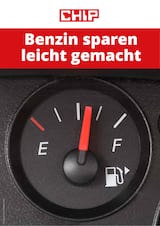2022 is a new record year for petrol and diesel. Fuel prices have never been as high as this year.
Now it is also mathematically certain: 2022 will be the most expensive tank year of all time. Two months before the end of the year, nothing could be changed even if petrol and diesel were given away from Sunday, as calculations by the German Press Agency based on ADAC data show. The E10 premium petrol limit was exceeded on Saturday, while diesel, which was particularly hard hit by the price increases, had already fallen a month ago.
In the previous record year 2012, E10 had cost an average of 1.589 euros per liter, diesel 1.478 euros. In the current year there hasn’t been a single day on which even one of the varieties was cheaper on average nationwide. “2022 is an extreme year in terms of fuel prices,” says ADAC expert Christian Laberer. “The fuel prices are still at an overpriced level, especially for diesel.”
Since they skyrocketed shortly after the start of the Ukraine war – at that time diesel cost more than 2.30 euros and petrol over 2.20 euros per liter – prices have not fallen to their previous levels. It did go down in places and the temporary tax cut in the summer dampened costs for three months.
2022 is already a record year for fuel prices
But if one assumes that fuel prices will remain roughly the same for the rest of the year, average prices will emerge at the end of the year that will almost pulverize the old records. With E10 there would be an annual average of around 1.88 euros – around 29 cents above the old record. In the case of diesel, the value would be around 1.98 euros per liter – that’s a whole 50 cents more than the previous record.
Quick relaxation is not necessarily in sight. “There is a risk that the high prices will become entrenched in the market for a long time,” says Laberer. In order to prevent this, consumers would have to use their market power and consciously refuel cheaply in order to boost competition.
However, Laberer gives motorists a little bit of hope: “At the moment we are still a long way from normalization, but recently the competition seemed to be picking up again, at least for petrol, so that prices are no longer so clearly decoupled from the oil price as in the past months since the start of the Ukraine war. But there is still a lot of room for improvement,” he says. And with diesel, the situation is “much tougher”. Special effects also contribute to this, as Laberer explains: “The industry is replacing gas with diesel and the demand for the very similar heating oil is currently picking up again. But that doesn’t justify how inflated current prices are.”
Equip your car for winter with items from ATU
On average, costs increase by several hundred euros per year
How much the high fuel prices affect drivers depends on how much their vehicle consumes and how far they drive each year. But if you start from the extrapolated values for the entire year, use typical vehicles and mileage and compare them with the average prices of the previous ten years, it is hundreds of euros. For a diesel with an annual mileage of 20,000 kilometers and a consumption of 6 liters per 100 kilometers, the costs increase by around 860 euros per year. Gasoline engines usually cover shorter distances, but consume more. Assuming typical 10,500 kilometers and 7.5 liters per 100 kilometers, the additional costs are around 360 euros.
However, those who hoped that the high fuel costs would help protect the climate will be disappointed. So far, no strong dampening effect on fuel consumption has been observed. There are no direct figures here, but the domestic deliveries for diesel and petrol published by the Federal Office of Economics and Export Control give a good indication. And here, after seven months – more up-to-date figures are not yet available – there is even an increase: 9.66 million tons of petrol were delivered – that is 7.7 percent more than in the same period last year. For diesel it was 19.5 million tons – 1.1 percent more than in the previous year.
Motorists are increasingly filling up with cheaper petrol variants
The increase is probably mainly due to the fact that there were significantly fewer corona restrictions in 2022 than in the previous year. This effect was obviously stronger than possible effects of the increased prices. However, this year’s delivery levels are below those of the years before the pandemic.
However, the higher prices seem to have an impact on the choice of which petrol to put in the tank: the share of the cheaper E10 in petrol consumption has risen sharply. In the first seven months of the year it was 22.8 percent, compared to just 15.8 in the same period of the previous year. And many more motorists could save that way, says Laberer. “Almost all petrol engines can take it, unless they are vintage cars. The price difference is usually 5 to 6 cents. Despite this, a lot more normal Super than E10 is still filled up.”

Saving fuel made easy – PDF
Germany is groaning under the historically high energy costs – also at the pump. For commuters or people in the country, doing without a car is not an option. However, our e-paper shows that despite the high prices, you can exploit some potential savings.

;Resize=(1200,627)&impolicy=perceptual&quality=medium&hash=783624d3b1a31c83c90f0281a8825bef2dd2e438a8ac556c008b1b46c9ea52eb)







